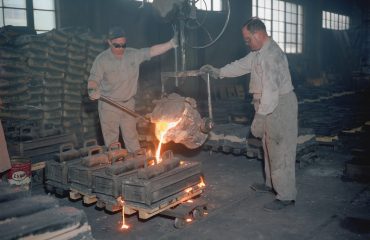The steel industry, a cornerstone of global infrastructure and manufacturing, presents both immense opportunities and significant challenges for new entrants. Successfully navigating this complex landscape requires a well-defined market entry strategy. This comprehensive guide explores various approaches, considering the unique dynamics of the steel sector, and offers insights for maximizing your chances of success.
1. Understanding the Steel Market Landscape: A Crucial First Step
Before formulating any strategy, thorough market research is paramount. This involves analyzing several key aspects:
- Market Size and Growth Potential: Identify target markets based on projected demand, economic growth rates, and infrastructure development plans. Consider regional variations in steel consumption and specific steel product categories (e.g., construction steel, automotive steel, stainless steel).
- Competitive Analysis: Analyze existing players, their market share, pricing strategies, and competitive advantages. Identify any niches or underserved segments where you can establish a foothold. Consider the presence of both domestic and international competitors.
- Regulatory Environment: Understand relevant regulations, tariffs, import/export restrictions, environmental standards, and labor laws in your target market. Compliance is crucial for long-term sustainability.
- Raw Material Availability and Costs: Secure a reliable supply of raw materials like iron ore and coal at competitive prices. Analyze transportation costs and potential logistical challenges.
- Technological Advancements: Assess the latest technological advancements in steel production, such as advanced high-strength steels, and their potential impact on your strategy. Consider the need for investment in modern equipment and processes.
2. Choosing the Right Market Entry Mode: Organic Growth vs. Acquisitions
There are two primary approaches to entering the steel market: organic growth and acquisitions.
Organic Growth: This involves establishing a new steel production facility or expanding existing operations. This approach requires significant capital investment, time, and expertise in steel manufacturing. It offers greater control over the entire value chain but carries higher risks.
Acquisitions: Acquiring an existing steel company provides a faster route to market entry. It allows you to leverage existing infrastructure, customer relationships, and brand recognition. However, due diligence is critical to assess the acquired company’s financial health, operational efficiency, and potential liabilities. Integration challenges can also be significant.
The optimal choice depends on your resources, risk tolerance, and strategic objectives. A hybrid approach, combining organic growth with strategic acquisitions, may also be viable.
3. Strategic Alliances and Joint Ventures: Sharing the Burden and Expertise
Strategic alliances and joint ventures can be particularly beneficial for new entrants. These collaborative arrangements allow you to share resources, expertise, and risks with established players. Potential benefits include:
- Access to Technology and Know-how: Partnering with a company possessing advanced technology or specialized expertise can accelerate your market entry and reduce development costs.
- Reduced Financial Risk: Shared investment reduces the financial burden and mitigates the risks associated with market entry.
- Enhanced Market Access: Collaborating with a local partner can provide access to established distribution networks and customer relationships.
- Regulatory Compliance: Local partners can provide valuable insight and assistance in navigating complex regulatory landscapes.
However, choosing the right partner is crucial. Careful consideration must be given to compatibility of corporate cultures, strategic goals, and risk tolerance.
4. Building a Strong Brand and Distribution Network: Reaching Your Customers
Successfully marketing and distributing your steel products is vital. This requires a well-defined branding strategy and a robust distribution network.
Branding: Develop a strong brand identity that communicates your value proposition, quality, and commitment to customer service. Consider highlighting your competitive advantages, such as superior quality, innovative technologies, or sustainable practices.
Distribution: Establish efficient distribution channels to reach your target customers. This may involve direct sales, distributors, wholesalers, or a combination of these approaches. Consider the geographical reach and logistical capabilities of your chosen channels. Building strong relationships with key distributors is essential for long-term success.
5. Navigating the Challenges: Risk Mitigation and Sustainability
The steel industry faces several challenges, including:
- Price Volatility: Steel prices are subject to significant fluctuations, influenced by factors such as raw material costs, global demand, and economic conditions. Effective risk management strategies are crucial to mitigate these price swings.
- Environmental Regulations: Stringent environmental regulations are increasingly impacting the steel industry. Investing in cleaner production technologies and implementing sustainable practices is essential for long-term compliance and competitiveness.
- Global Competition: The steel industry is highly competitive, with major players operating on a global scale. Developing a strong competitive advantage is crucial for survival and success.
- Supply Chain Disruptions: Global supply chain disruptions can impact the availability and cost of raw materials and transportation. Strategies for diversification and resilience are necessary.
Proactive risk management, including hedging strategies, diversification, and robust contingency planning, is essential for navigating these challenges.
Entering the steel sector requires a well-defined strategy, thorough market research, and a commitment to long-term sustainability. By carefully considering the factors outlined above, new entrants can significantly improve their chances of success in this challenging yet rewarding industry.
SEO Tags: Market Entry Strategy, Steel Industry, Steel Manufacturing, Steel Market Analysis, Steel Business




